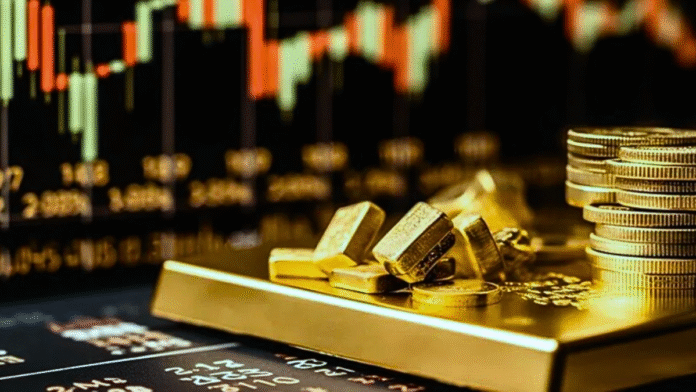Gold prices have reached record highs, highlighting growing concern among investors over uncertainty in U.S. policies and the impact of tariffs under Donald Trump’s administration. The precious metal is increasingly seen as a safe haven for wealth, especially as traditional investments face risks from political and economic instability.
Investors across the globe are closely monitoring U.S. political developments. Frequent government shutdowns, ongoing debates over budgets, and the use of tariffs as a blunt economic tool have created a climate of uncertainty. In such conditions, gold becomes more appealing because it retains value independently of government decisions or market fluctuations.
The recent surge has pushed gold past $3,900 per ounce, demonstrating that many investors are prioritizing security over potential returns. Unlike stocks or government bonds, it does not depend on interest rates, fiscal policies, or economic forecasts to hold value. This makes it a preferred choice when U.S. policies, particularly under Donald Trump, are unpredictable.
Policy Uncertainty and Tariffs Drive Gold Demand
Government shutdowns and delays in economic reporting have heightened anxiety among investors. Postponements in data on employment, economic growth, and other key statistics make it difficult for market participants to make informed decisions.
Trump announces plans for 100% tariffs on foreign-made movies
Investors are increasingly moving funds into gold, which is considered a safe asset during uncertain times. The metal’s lack of interest or yield, typically viewed as a disadvantage, becomes an advantage when returns from other investments are threatened by political decisions.
Trade policies and tariffs under Donald Trump’s administration are further fueling gold demand. Tariffs act as hidden taxes, increasing costs for domestic businesses and consumers. These added expenses can drive inflationary pressure and weaken the dollar, making the metal a more attractive option. When inflation rises and the value of U.S. currency becomes uncertain, gold’s appeal grows for those looking to safeguard their wealth.
Additionally, the administration’s approach to fiscal management and its effect on federal spending have contributed to market unease. Frequent budget brinkmanship, politically motivated shutdowns, and threats of federal layoffs have made investors cautious, pushing them toward assets like gold that remain largely insulated from short-term political maneuvers.
Investors also respond to the way the Federal Reserve is perceived. Pressure on the central bank to adjust rates quickly amid political noise makes traditional safe assets such as Treasuries less appealing. Gold, by contrast, offers protection against policy missteps, which further strengthens its demand.
Trump slaps 100% tariffs on medicines and new duties on trucks and furniture
Central Banks and Private Investors Support Gold Prices
Central banks worldwide are increasing their gold holdings as a hedge against U.S. policy and financial risks. Over the past few years, official purchases have exceeded a thousand tonnes annually. Many countries are seeking insurance against sanctions risk, dollar depreciation, and political volatility, with the metal seen as a reliable long-term store of value.
Private investors are also participating in this trend. Exchange-traded funds (ETFs) and other gold-related investment products have grown significantly, even when stock markets remain strong. This suggests that investors are diversifying portfolios and seeking protection from political and economic uncertainties in the United States.
Physical demand for gold remains robust in countries like India and China, where jewelry buyers step in when prices dip, stabilizing the market. Combined with steady purchases by central banks and institutional investors, this creates a strong support system for the metal’s value, reducing the likelihood of sharp sell-offs despite market fluctuations.
Gold’s rise reflects growing unease over U.S. policy uncertainty, inflationary pressures from tariffs, and broader fiscal concerns under Donald Trump. Both individual and institutional investors are turning to gold as a safe asset, independent of government decisions or market volatility. The record prices illustrate a global effort to protect wealth amid political and economic unpredictability.


